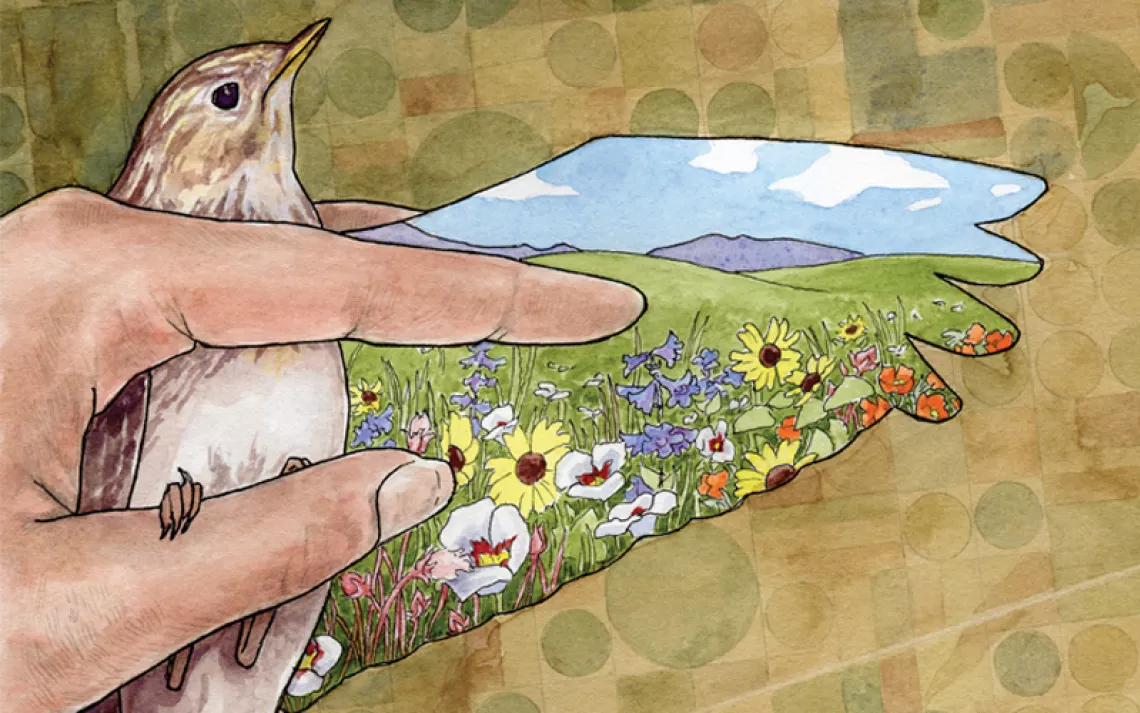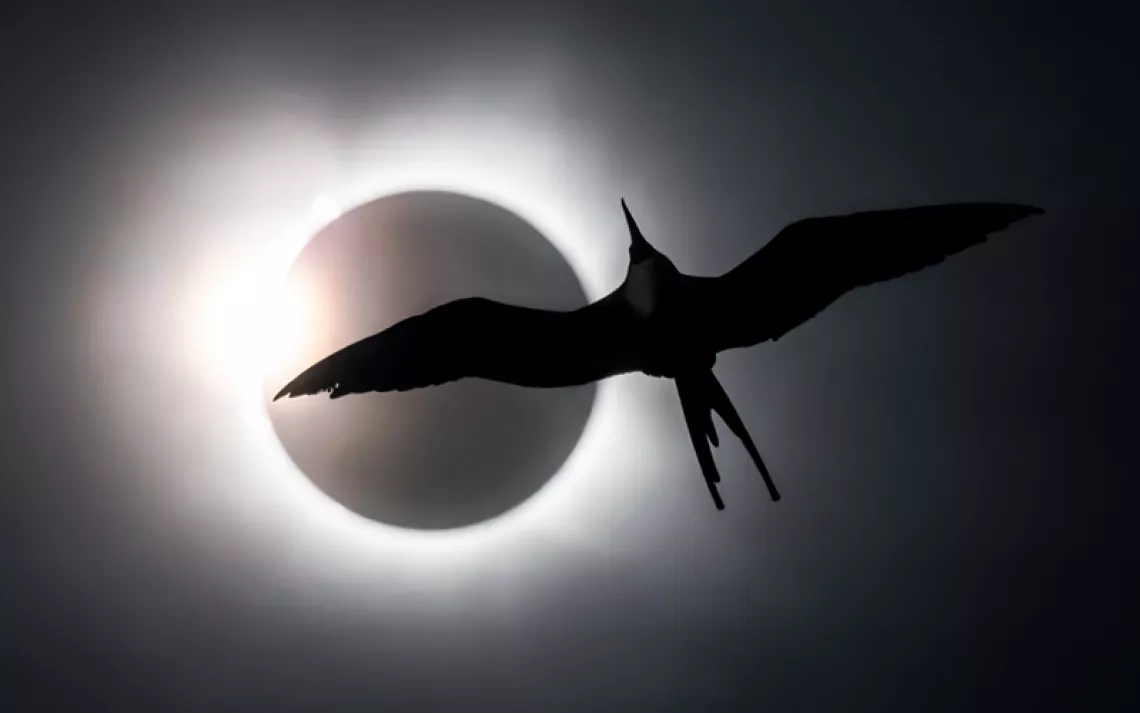The Trump Administration Throws the Greater Sage-Grouse Under the Bus
Instead of collaborative conservation, we're all headed to court

The greater sage-grouse requires lots of open country—drilling pads won't do. | Photo by Tatiana Gettelman, USGS WERC
UPDATE: On December 6, 2018, the Trump administration followed through on its effort to open millions of acres of sage-grouse habitat to oil and gas drilling and other development. The Interior Department plan reduces the 10.7 million acres of sage land that would have been protected under a 2015 plan by the Obama administration to only 1.8 million acres. Conservation groups, including the Sierra Club, say the Trump plan is woefully inadequate and a sop to the oil and gas industry.
The mating dance of the greater sage-grouse is both awkward and magnificent. Each spring, the birds gather in a kind of avian nightclub called a lek. The males strut, pop, fan their spiky tail feathers, and inflate the pendulous ocher air sacs dangling from their chests. The hens choose the hottest dancer for hasty mating. "It's interesting to contemplate," says Mark Salvo of Defenders of Wildlife. "Why that? What is it that hens appreciate in this display?"
As with so many romantic rituals, the setting is key. Greater sage-grouse require vast expanses of healthy sagebrush habitat, and return to the same leks year after year. Over the 20th century, the birds' range was cut in half—degraded or destroyed by mining, drilling, grazing, roads, invasive weeds, and development—leaving fewer than 500,000 greater sage-grouse spread across 11 western states.
The greater sage-grouse is among hundreds of creatures—ranging from pronghorn and golden eagles to rare rabbits, tiny spiders, and unusual lichens—that are dependent on sagebrush steppe. "It's one of the largest ecosystems in North America, yet it's considered one of the most fragile," Salvo says.
Conservationists petitioned to add the greater sage-grouse to the endangered-species list. In 2010, the Obama administration determined that listing was warranted but that doing so would likely mire much of the West in lawsuits for decades (60 percent of sage-grouse habitat is federally owned; most of the rest is in private hands). So the Interior Department proposed an alternative: a collaborative plan to preserve essential habitat and eliminate the need to list the bird.
"I participated in this sage-grouse business because a listing would be terrible for us," says Pat O'Toole, a fourth-generation rancher whose land includes six leks and 700 male grouse. Each year he moves his sheep and cows hundreds of miles, and he worries that a listing would hamstring him with federally imposed regulations. If that happened, he says, "you're not local anymore—you're driven by national agendas."
The four-year greater-sage-grouse planning process was the largest collaborative conservation effort in U.S. history, covering 15 planning areas in 10 states and costing $45 million. Private landholders sat alongside federal and state officials, governors from both sides of the aisle, representatives from hunting and sporting groups and oil and gas companies, environmentalists, miners, and developers.
"We spent an incredible amount of time developing what we think is a workable strategy," recalls Paul Ulrich, director of government and regulatory affairs for Jonah Energy, who participated in planning efforts in Wyoming. "Hundreds and hundreds and hundreds of hours."
The resulting plans weren't perfect. Some environmental groups, including the Sierra Club and Defenders of Wildlife, wanted more restrictions on the highest-priority habitat and felt the patchwork plans left the landscape too fragmented. But most were willing to give the plans a chance. In September 2015, when Obama's interior secretary, Sally Jewell, announced that the protection provided by the plans eliminated the need for ESA listing, she was flanked by two Democratic governors and two Republicans.
The Trump administration blew up all that hard work in June 2017, when Interior Secretary Ryan Zinke announced that the plans would be reviewed to ensure that "conservation efforts do not impede local economic opportunities." A month later, the Western Energy Alliance, an oil and gas industry trade group, sent Zinke a letter in which the word "burdensome" occurred seven times in four pages. When Zinke's review was completed in August, it included or addressed 13 of the alliance's 15 requests for changes, sometimes almost word for word.
Zinke's preferred approach veers sharply from habitat protection to focus on population targets, which is scientifically problematic given that grouse numbers fluctuate greatly in response to variables like rainfall and wildfires. Captive breeding, another approach favored by Zinke's staff, has had little success in the past.
Wyoming, home to 40 percent of the nation's remaining greater sage-grouse, might have been expected to back Zinke's review, given that mineral taxes and fees provide a majority of the state's income. But Matt Mead, the state's Republican governor, opposed reopening the planning process. "We still strongly believe that management for habitat, based upon what science tells us, is the best way to do it," he says.
In September, the Interior Department formally moved to amend the greater-sage-grouse plans for Bureau of Land Management lands. This will require a new comment and evaluation period that could take a year or longer. Meanwhile, binding state-level plans are already being implemented.
This leaves industry, ranchers, and farmers in a regulatory environment that is once again in flux, leaving many unhappy. "For any oil and gas operator, predictability is critical," Ulrich notes. "It's important to have a clear idea what the regulations are down the road."
Listing may not happen for the greater sage-grouse, but the eye-catching bird is not the only sagebrush-dependent species that could be listed under the ESA. "We have 362 others, and that's just vertebrates," says Brian Rutledge of the National Audubon Society. "Grouse were just the leading candidate because they stand out there in the springtime and wave at you."
This article appeared in the January/February 2018 edition with the headline "Sagebrush Standoff."
 The Magazine of The Sierra Club
The Magazine of The Sierra Club



